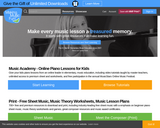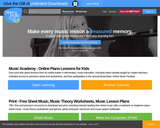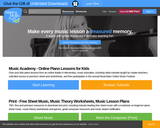
Students work cooperatively to learn and experience a seven part rondo form.
- Subject:
- Arts Education
- Music
- Material Type:
- Lesson Plan
- Provider:
- Making Music Fun
- Author:
- The Lesson Zone
- Date Added:
- 02/26/2019

Students work cooperatively to learn and experience a seven part rondo form.

Students will learn how to effectively visualize. They will create detailed visualizations after smelling familiar smells, while listening to a story and while listening to a piece of music. By the end of the lesson, students will understand the importance of visualization in reading and music.

In this cooperative improvisation, students will go through a process of composition very much like what a composer might do in preparation for creating a serious piece of music. Students find inspiration, research details, imagine what might be possible and then deal with the practicalities of the performance group that they have chosen. Writing down music to share with someone in print is the final stage and may take years to perfect, but this non-written experience allows each child to imagine and create a unique, musical expression which can be shared with others.

Students learn to keep a steady beat in a fun-filled jumprope activity/contest. This lesson is designed to fulfill Standard #2 of the National Standards for Music: Performing on instruments, alone and with others, a varied repertoire of music.

Excellent cross-curricular music and science lesson about where sound comes from. Activities for students to discover and learn about waves, vibrations, frequencies, and how energy relates to volume (dynamics). Includes video clips, and hands-on interactive experiments with everyday objects.

Students will gain an understanding of ten instruments of the orchestra (trombone, trumpet, french horn, cello, violin, flute, clarinet, oboe, bassoon, harp). This lesson is designed to fulfill Standard #6 of the National Standards for Music: Listening to, analyzing, and describing music.